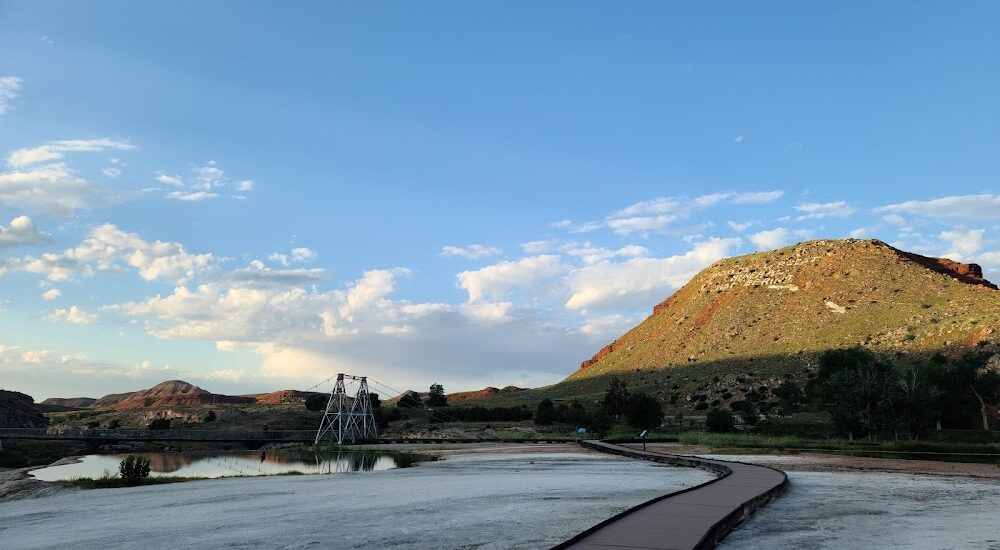Welcome to Rainbow Terrace in Thermopolis, Wyoming, a vivid tapestry of history and natural wonder. This unique location is nestled within the Hot Springs State Park, renowned for its mineral-rich hot springs. The springs have long been a source of fascination and healing, dating back to the time when Native American tribes, particularly the Shoshone and Arapaho, gathered here to benefit from its restorative waters.
The story of Rainbow Terrace begins with its geological formation. Millions of years ago, tectonic activities created an anticline, a fold in the earth’s surface, allowing rainwater and snowmelt to seep deep into the ground. As this water heated and rose back to the surface, it formed the hot springs we see today. The water at Rainbow Terrace emerges at a scorching 135 degrees Fahrenheit and cools slightly as it cascades over the terraces, leaving behind colorful mineral deposits that give the site its name.
In 1896, a significant event in the history of Thermopolis occurred when the land on which the hot springs are located was ceded to the state of Wyoming by the Shoshone and Arapaho in a treaty known as the ‘Gift of the Waters.’ This treaty ensured that the hot springs would remain accessible to the public, a legacy that continues to this day.
Throughout the early 20th century, Thermopolis and the hot springs gained popularity as a health destination. People traveled from far and wide to soak in the therapeutic waters, and the town flourished as a result. The Rainbow Terrace became a central feature of the park, attracting visitors with its stunning natural beauty.
The area around the hot springs is also rich in cultural history. The nearby Legend Rock Petroglyph Site, about 30 miles from Thermopolis, showcases ancient rock carvings that date back over 2,000 years, providing a glimpse into the lives of the early inhabitants of the region.
Today, Rainbow Terrace is more than just a geological wonder; it’s a reminder of the vibrant history and culture of the area. As you walk along the boardwalks and across the swinging bridge, you are literally walking through history, a place where the natural world and human stories converge.






